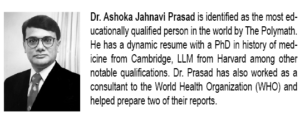

The other mirroring process is a parallel between an infectious disease as an actual contagion and mental illness as a symbolic contagion. “Insanity is contagious”, writes Joseph Heller in Catch-22 [1]. We, of course, know that it is not, except our primal instincts are apparently not entirely convinced about that [2]. Hence the burdensome stigma and isolation of both mental illness and infectious disease, stemming from ‘fear of contagion’. It is, therefore, no wonder that diseases stigmatized in the old days, such as leprosy, became replaced by mental illnesses of the more modern times, sometimes combining into a perfect storm of an infectious pandemic with mental illness and substance abuse on top. Such was the case with HIV, with multiple layers of stigmatization [3].
We ordinarily do not permit those deeply seated fears of contagion and fears of insanity to come to the surface, because the anxieties they generate are intolerable, particularly if they are fused into one. We often, however, indulge in experiencing those terrifying emotions for entertainment purposes. We allow ourselves to be scared by zombies when watching a zombie flick in our state of suspended disbelief because zombies are visibly sick, we know that their sickness is transmissible, and that they could make us sick at any time (unless we get eaten first). At the same time, as a bonus, we are shaken to our core because not only are they physically sick, but because they are also invariably insane and it is the implied loss of our own sanity, our own self, in the process of ‘infection’ that terrifies us. Zombies that threaten our health and our sanity must, therefore, be removed, banished, or isolated.
The use of zombies in the realm of public health has been lingering since 2003 and The Zombie Survival Guide by Max Brooks [4]. It has been a fair game in science since CDC used zombies to illustrate its emergency preparedness segment in 2011 [5]. Zombies have so far been used in numerous campaigns aimed at raising awareness and mounting preparedness for epidemic outbreaks and various other emergencies, from FEMA to mathematicians and pharmacists [6]. Somewhat predictably, after the initial curiosity and amusement with the topic of the ‘zombie apocalypse’, the interest of the target audience begins to wane, leaving no measurable output in its wake [7].
Underlying the dread/fascination with zombies is the ambivalent relationship we have with our own instincts. As early as 1915, Karl Abraham referenced the undead in a letter to Freud, postulating that the oral drive present from the earliest stages of life could lead to the desire to incorporate the loved object by devouring it [8]. This idea had already been taken up by Freud in his Three Essays on the Theory of Sexuality [9]. Abraham wondered if such unacceptable cannibalistic urges lead to delusions of being a werewolf or having eaten men or babies – and became the foundations of melancholia over having attacked the object. It was George Romero’s Night of the Living Dead series that introduced the idea that zombies could be cannibals [8] and this arguably propelled them to capture a greater share of the public imagination. What was being tapped into was the simultaneous identification with the urge to orally attack and incorporate submerged in the id, and the horrified disavowal of it – into repulsive zombies that must be exterminated [10].
Common to the generally held beliefs about both zombies and mental illness is the idea of being taken over and losing one’s self-determination. Zombies differ from vampires and werewolves, in that they have no volition, they are driven purely by their hunger. They do not have the conscience or the consciousness to have any qualms about their actions [11]. In this, they represent the fantasy of regression to an infantile state where one can feed insatiably without knowledge of one’s own aggression [12]. Such regressions occur in both pandemics and in the mass panic associated with them – being invaded, losing control of one’s own mind and actions, and being held in the thrall of one’s own rapacious hunger and destructive appetite. The end result: a complete giving in to one’s baser nature leading to the apocalypse and the breakdown of human civilization.
In such a Doomsday, ‘cast-off resistances, disgust, and anxieties’ [13] can be believed to live in the contaminated or infected. These ‘unfamiliar intruders’ (Spillrein, 1995) can then be quarantined in ghettos, attacked, maimed, and killed without compunction. Pandemics include not just the spread of physical illness, but the dissemination of racist, anti-Semitic, homophobic propaganda and pro-violence, limbic agendas that serve to allow our aggressive desires to be simultaneously sated, and projected into the other and destroyed without guilt.
It appears that we indulge these fantasies as a way to simultaneously allow our primal fears and our primitive aggression to come to the fore all in one neat, albeit predictable and repetitive, the scenario of a zombie apocalypse. In the same vein, when a potentially dangerous outbreak appears on the horizon, we give in to those impulses again, this time at the collective, societal level. Massive anxiety or massive hysteria heralds and shrouds an actual outbreak and once the outbreak turns out to be contained and subsiding, we turn our heads away and forget about the horrors of anticipating the wave of the pandemic, having conquered our fears [14].
As rational beings and scientists, we appear to be somewhat uncomfortable with the unconscious, primal reactions to possible pandemic outbreaks, so we perhaps choose not to pick them up in our conscious thinking. We can deal with the pandemic as a physical disease, we can deal with the raw, primordial reactions of the public to the outbreak, we can deal with the psychological consequences of those illnesses and outbreaks in the aftermath, but we have a hard time dealing with its dark, charged psychological symbolism within us, right here and now.
A pandemic goes against the widely held conception of a just world ruled by a benevolent higher power. A plague gives the lie to the belief of nature as a nurturing mother or omnipotent God as a nurturing parent. In fact, in the Bible and other religious texts, pandemics were specifically framed as punishments rained down on communities for their sins and infractions. Communities can tolerate sporadic cases of illness amongst individuals within it, but as cases multiply, the ability to absorb the unpredictable, capricious nature of illness overwhelms a community’s ability to tolerate uncertainty.
Not only can contagion not be controlled or mastered, but the search for causality creates the unconscious narrative of the pandemic being a result of the community’s own badness. Within the community, the well resent and hate the unwell for not only being vectors of illness but the ostensible reason for the whole community to be damned, expelled from grace. If zombification separates the soul from the body [15], a pandemic separates a community from its order and its well-being.
The moment order and health are restored, the desire to be seen as good and whole leads to amnesia for the chaos and trauma that preceded recovery. Pandemics disrupt our sense of reality and order, leading to a changed way of storing and metabolizing memories and experiences – and a return to normalcy is accompanied by repression and even amnesia. This discomfort with acknowledging the deep, existential meaning an outbreak may have for our individual and collective psyche may be reflected in the very first encounter psychoanalytic theory and practice had with a pandemic. In January 1920, Sophie Freud-Halberstadt, the fifth child of Sigmund Freud, died of complications associated with the Spanish influenza pandemic of 1918–1920. Evidently devastated by this loss, Freud writes to Pastor Oskar Pfister: “This afternoon we received the news that our sweet Sophie in Hamburg had been snatched away by influenzal pneumonia, snatched away in the midst of glowing health, from a full and active life as a competent mother and loving wife, all in 4 or 5 days, as though she had never existed. Although we had been worried about her for a couple of days, we had nevertheless been hopeful; it is so difficult to judge from a distance. And this distance must remain distance; we were not able to travel at once, as we had intended, after the first alarming news; there was no train, not even for an emergency. The undisguised brutality of our time is weighing heavily upon us” <sup>[16]
There is a somber, perhaps necessary, almost fatalistic acceptance of the influenza pneumonia evocative of the ‘complete submission to fate’ Freud observed among Bosniaks during his 1898 trip to Bosnia-Herzegovina [17]. There is no reflection, no questioning of the grave illness that makes rounds through Europe and takes away young people from the prime of their lives. There is no protest, let alone rage, when travel restrictions due to the flu outbreak prevent him from seeing his dying ‘Sunday child’ or attending her cremation.
In a letter to his friend, Max Eitingon Freud writes: “I do not know what more there is to say. It is such a paralyzing event, which can stir no afterthoughts when one is not a believer and so is spared all the conflicts that go with that. Blunt necessity, mute submission” [18]. Visible are grief and devastating loss of a mourning parent, and strikingly absent are critical examinations of the meaning of such events and perhaps the outline of how our self – our id, our ego, our superego perceive and relate to such phenomena. A century later, that silence still persists.
Freud’s critical thinking nevertheless may have been affected by this loss as reflected in his next book – Beyond the Pleasure Principle (1920) – in which he introduces the concept of death drive. His first biographer, Fritz Wittels, writes: “When Freud made this communication (about death drive) to an attentive world, he was under the impress of the death of the blooming daughter.” Freud himself, however, was not fond of this idea and although he found it “most interesting” in his letter to Wittels, he disavows it: “I should have presumed the existence of a connection between my daughter’s death and the train of thought presented in Beyond the Pleasure Principle. But the inference that such a sequence exists would have been false” [19].
If death and loss of a loved object is mourned, but not examined, then the agent that caused that death can pass undetected and freely descend back into the depths of the unconscious. Until the next iteration, we are bored and unimpressed by the dormant plagues brewing in the remote parts of the world and of our mind. Boredom here is not an authentic sensation, but merely resistance to a situation where one can be completely overpowered or resulting in significant loss of control [20, 21].
Those of us who deal with the realm of mind in the scientific sense cannot afford to be bored by this subject or to continue to leave it unexamined by being unengaged. Utilizing humor and banality of pop-culture can represent coping styles through which otherwise boring and difficult subjects can sometimes be tackled. If that is what it takes, so be it. We can recruit all the zombies of our collective imagination if that will help us better understand the grave psychological implications of a pandemic outbreak and prepare for it. We can venture into the realm of fiction (i.e., science fiction) if that will help us predict the emotional responses and psychological toll of a future outbreak, even if we call it Disease X [22].
The use of zombies and pop culture terminology has permeated other disciplines helping to bolster their efforts to prepare for infectious outbreak disaster scenarios. There is no reason why psychiatry should not do the same, especially since we claim to have the expertise of the realm zombies actually hail from – the depths of our unconscious.
References:
- Heller J. Catch-22: a novel. New York: Simon and Schuster; 1961.
- Marsh JK, Shanks LL. Thinking you can catch mental illness: how beliefs about membership attainment and category structure influence interactions with mental health category members. Mem Cogn. 2014;42:1011. https://doi.org/10.3758/s13421-014-0427-9.
- Amerongen DI, Cook LH. Mental illness: a modern-day leprosy? J Christ Nurs. 2010;27(2):86–90.
- Brooks M. The zombie survival guide, complete protection from the living dead. New York: Penguin Random House; 2003.
- Preparedness 101: Zombie Apocalypse, Posted on May 16, 2011 by Ali S. Khan, CDC Public Health Matters log. https://blogs. cdc.gov/publichealthmatters/2011/05/preparedness-101-zombieapocalypse/. Accessed July 2018.
- Baker DE. Pharmacy and the “zombie apocalypse”. Hosp Pharm. 2015;50(11):957–8. https://doi.org/10.1310/hpj5011-957.
- Kruvand M, Bryant FB. Zombie apocalypse: can the undead teach the living how to survive an emergency? Public Health Rep. 2015;130(6):655–63. 8. Abraham K. Letter from Karl Abraham to Sigmund Freud, March 31, 1915. The Complete Correspondence of Sigmund Freud and Karl Abraham 1907–1925, 303–306.
- Freud S, Strachey J, Richards A. On sexuality: three essays on the theory of sexuality and other works. Harmondsworth: Penguin Books; 1977.
- Nugent C, Berdine G, Nugent K. The undead in culture and science. Proceedings (Baylor University. Medical Center) 31(2);2018:244–49. PMC. Web. 2018 July 22.
- Szajnberg NM. Zombies, vampires, werewolves: an adolescent’s developmental system for the undead and their ambivalent dependence on the living, and technical implications. Psychoanal Rev. 2012;99(6):897–910.
- Winnicott DW. The maturational processes and the facilitating environment: studies in the theory of emotional development. New York: International Universities Press; 1965.
- Rosenfield K. Of zombies, preppers, and bastions: pirates on the Dark Sea of disaster. DIVISION/Rev. 2013;8:9–10.
- Reconstruction of a Mass Hysteria: The Swine Flu Panic of 2009, Der Spiegel, English Edition. 2010 Mar 12. By Der Spiegel Staff. http://www.spiegel.de/international/world/reconstruction-of-amass-hysteria-the-swine-flu-panic-of-2009-a-682613.html
- Daugherty P. The metaphorical zombie a review of zombie theory: a reader edited by Sarah Juliet Lauro. Death Stud. 2018; https://doi.org/10.1080/07481187.2018.1444928.
- Halberstadt-Freud, Sophie (1893–1920). International Dictionary of Psychoanalysis. Retrieved July 31, 2018 from Encyclopedia.com: http://www.encyclopedia.com/psychology/dictionaries-thesauruses-pictures-and-press-releases/ halberstadt-freud-sophie-1893-1920
- Freud S, Strachey J. The psychopathology of everyday life. Harmondsworth: Penguin Books; 1975.
- Rowlinson M. Tennyson’s fixations: psychoanalysis and the topics of the early poetry. Charlottesville/London: University Press of Virginia; 1994. p. 165–7.
- Dufresne T. Tales from the Freudian Crypt: The death drive in text and context. Stanford: Stanford University Press; 2000. p. 29–30.
- Fenichel O. On the psychology of boredom. In: Rapaport D, editor. Organization and pathology of thought: selected sources. New York: Columbia University Press; 1951. p. 349–61. https:// doi.org/10.1037/10584-018.
- Eastwood JD, Frischen A, Fenske MJ, Smilek D. The unengaged mind: defining boredom in terms of attention. Perspect Psychol Sci. 2012 Sep;7(5):482–95. https://doi.org/10.1177/1745691612456044. 22. Hatchett R. It might sound like science fiction, but disease X is something we must prepare for. The Telegraph. 2018 May 15. https://www. telegraph.co.uk/news/0/must-work-together-prevent-disease-x/
























